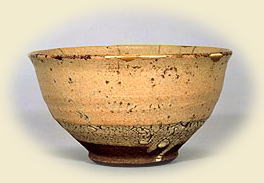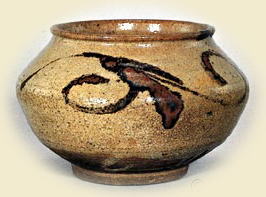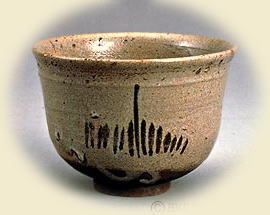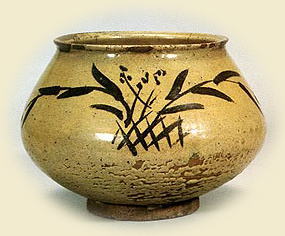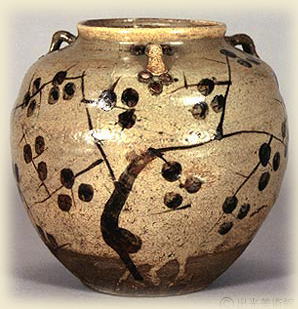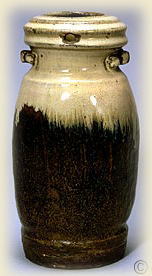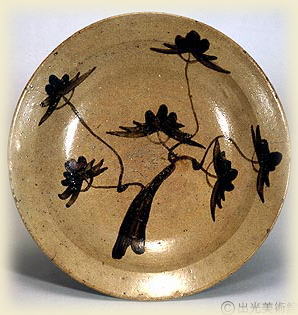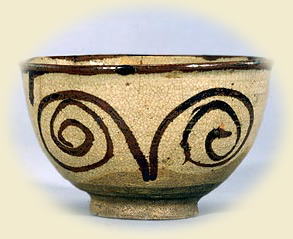|
||||||||||||||||||
Exhibition Notice 100 Masterpieces of Ko-Garatsu Tanakamaru and Idemitsu The Encounter of Two Collections Idemitsu Museum of Arts, Moji, Kitakyushu City March 3-May 7, 2006 Closed on Monday |
||||||||||||||||||
Ko-Garatsu (Old Karatsu Pottery)
|
||||||||||||||||||
| Hello, friends. I would like to introduce Ko-Garatsu. 'Ko' means 'old', and 'Garatsu' is the way how 'Karatsu' is pronounced directly after another word. Here, Karatsu means, not this land, but the general name of the pottery products made in this district. Antique lovers cannot resist the charm of Ko-Garatsu. Like Charles Lamb in the above quotation, they ask me if I had some nice pieces of Ko-Garatsu, even cracked parts of pottery, which I have NOT, sorry to say. So I will write a brief history of Karatsu pottery, and show you some fantastic photos of masterpieces of Ko-Garatsu, borrowing from Idemitsu Museum of Arts. Idemitsu Museum has the best Ko-Garatsu collection in the world. Please enjoy. |
||||||||||||||||||
How and when was Ko-Garatsu started, and how was it used by people? There are so many mysteries and missing links. New discoveries are still continuing, and revealing the facts one after another. Isn't it amazing? In late 1580's, Korean potters crossed the Genkai Sea and settled on the southern hillside of Karatsu, called Kishidake. The style of the ascending kilns did not exist in Japan at that time, and that was the proof that these potters were Koreans. Only 10 years was the period when Kishidake flourished, and then the potters moved to Shiinomine, the other side of the mountain, which now belongs to Imari City. Shogun Hideyoshi's lunatic ambition to conquer China turned to a big failure, leaving so many sacrifices and tragedies in Korean Peninsula. His Daimyos competitively rushed to catch Korean potters, and brought them back to Japan, because Korean pottery was an adored piece of art at the time. Thanks to those Korean masters, Karatsu pottery became popular all over Japan. But too short the period of highlight was. In Arita, a Korean master found stones suitable for making porcelain. Then, this birth of Arita ware (Confusingly, it was called Imari Ware because it was transported from Imari Port) made Karatsu pottery decline. After that, Karatsu pottery had to change its style, throwing away its strong, masculine, simple charm, and adding more pictures of fine lines and colors, probably with the idea that simple thing was too common. Long time passed. In 19th century Japan opened its doors to foreign countries, and there came the Meiji Restoration. There was a big change in modern art, and the critics were shouting, "Go back to Momoyama Period!" Momoyama is the age of Hideyoshi. So Ko-Garatsu was re-discovered, and was enthusiastically welcomed and admired. There still is a tide to learn from Ko-Garatsu, and potters were studying hard to make their pottery as beautiful as Ko-Garatsu. Now, I will introduce some of the masterpieces of Ko-Garatsu. The Copy-righted photos are borrowed from Idemitsu Museum of Arts.
|
||||||||||||||||||
How did you like these beautiful Ko-Garatsu pieces ? Thinking of the pains and sufferings of those kidnapped Korean potters, the appealing beauty deepens and bewitches me. Now, Idemitsu Museum of Arts, Moji, Kitakyushu is exhibiting Ko-Garatsu. ( March 3, 2006-May 7, 2006) I hope you can come to Kyushu during this period. I am sure you will be bewitched! See you next month! |
||||||||||||||||||
|
||||||||||||||||||

